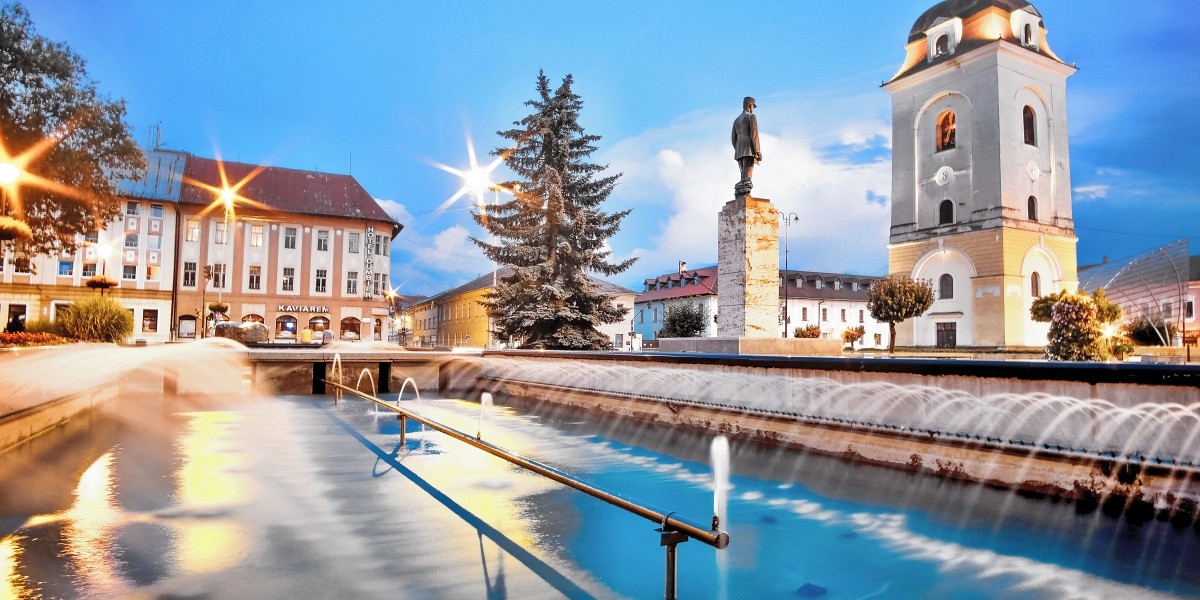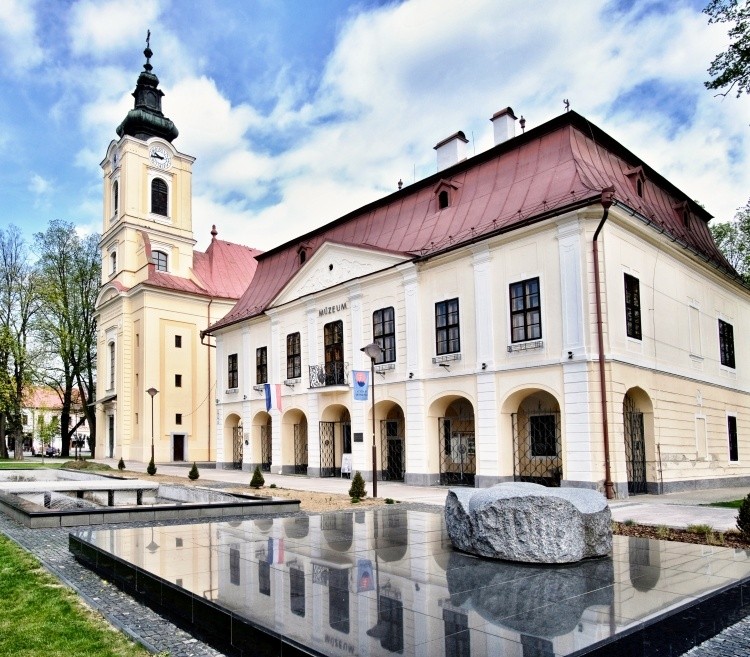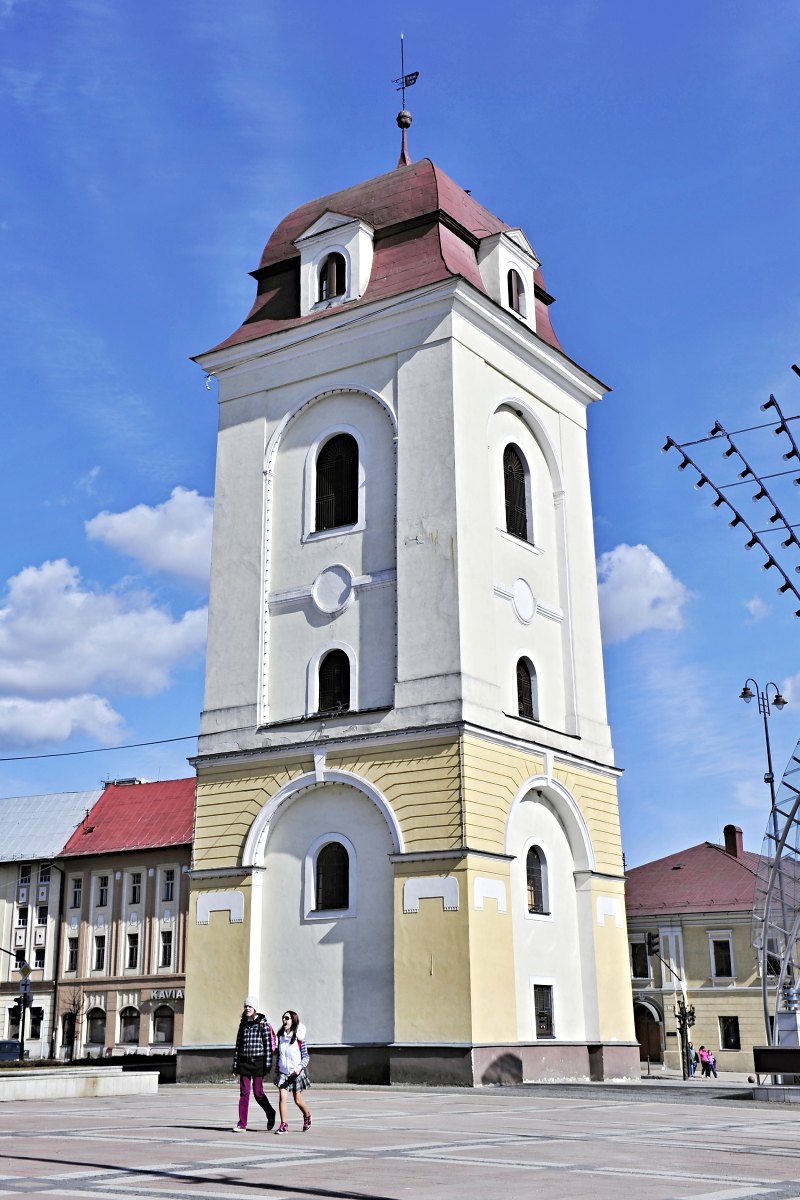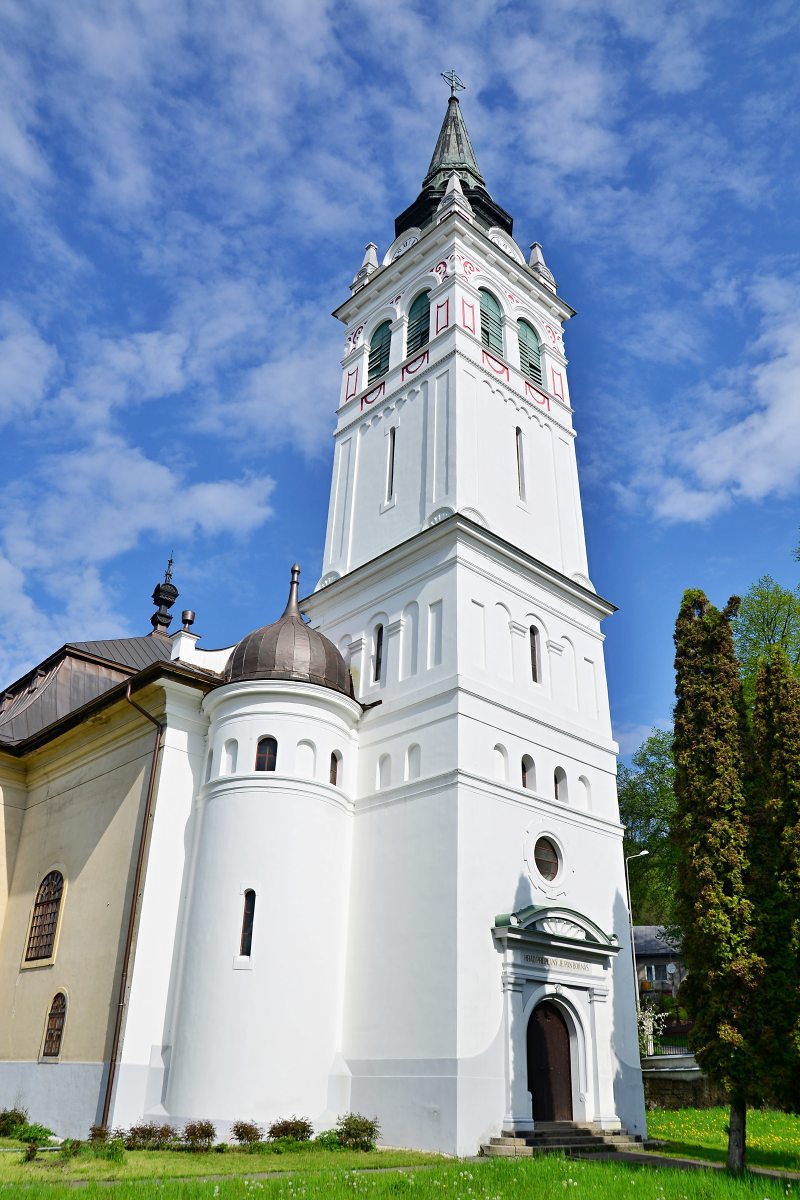
The town Brezno
Brezno is rightly considered as an administrative, economic as well as cultural centre of the Horehronie region. The town lies on both banks of the river Hron at the foot of the Low Tatra Hills in the hollow of Brezno. In the beginning, the region was dominated by agriculture. Later, mining prevailed. However, Brezno became a town forged by crafts and trade in the end. Currently, the town boasts architectural jewels, developing tourism and preserved cultural sights.
Brezno's square

The fountain in the square

Town tower

Evangelical church

Churches and other sacral buildings
Roman Catholic Church of Saint Virgin Mary’s Assumption built in years 1782-1792 after an extensive fire in the town dominates the architectonically interesting M. R. Štefánik Town Square. What is currently a parish church, was initially built as a single-nave building in the Baroque style. Later, a tower was constructed to complement the building. The original late Baroque furniture has been preserved in the interior. The brick column architecture of the main altar of the Assumption of the Virgin Mary is part of the sanctuary. The lateral altars are dedicated to the Divine Heart and the Heart of Jesus. In the concha above the sanctuary you can admire the scene of the Coronation of the Virgin Mary, an iconographic complement to the image of the main altar. On a vault of the nave there is a scene of the Annunciation, supplemented by the saints of the Old and the New Testaments as well as female figures from the Old Testament. Services are held daily in the church and it is considered one of the national cultural sights.
The Evangelical Church belongs to the first churches in Slovakia to be built after the issuance of a tolerance patent of Joseph II in 1781, which allowed the construction of Protestant churches beyond main streets, without a tower and a presbytery. The church was consecrated in 1787. Ján Chalupka made a significant contribution to its history. During his active participation the church was restored and enlarged after the fire, and an emporium, a pulpit and a new altar were added. The 100th anniversary of its consecration was significant for the church. A new three-manual organ with 42 registers was purchased on the occasion.
In addition to two churches located on the Square of M.R Štefánik there is also a Piarist monastery with a chapel. This building was built in years 1694 - 1713. The two-wing three-storey building with monastery corridors is almost entirely underlined by basements. In its north-western part one can find the monastery chapel of the Virgin Mary. The rooms are mostly vaulted with barrel vaults with connecting lunettes. During the restoration of the chapel in 1906 a late Gothic wooden polychromic sculpture of the Virgin Mary was installed on the neo-Gothic altar. It comes from the parish church burned down by the Dócio family in 1517. Before the fire in 1779 it was part of the main altar of the burned-out church “Na Bráničke”. A part of this space was also a spacious garden.
In the case of the St. Cross chapel (“Sv. Kríža”/”Na Bráničke”) we are talking originally about a Roman Catholic church of the Blessed Virgin Mary built in years 1517 - 1519. It was the second church built in Brezno. It is interesting that the Piarists had a crypt bricked under its sanctuary in 1746, in which they buried members of the Piarist order. Above the entrance to the crypt was an inscription: "Either we are alive, or we are dying, the Lord we are." It is also worth noting that there is a classicist sculpture of Calvary from the beginning of the 19th century in the interior of the altar canteen.
The Jewish synagogue is the youngest sacral building located in the town. The history of this building is related to the year 1859, when 3 Jewish families managed to settle in Brezno. The formation and establishment of a Jewish community in the town dates back to that year. In 1863, a representative of their church choir, Móric Fried, acquired a plot of land for the burial of the dead. The Jewish Religious Organization was founded in 1870. The district originally consisted of 20 founding members.
The first God services were held in the Tesák’s House, ewhere one of the rooms was designated as a prayer room. Before 1900 the number of Church followers increased and premises of the prayer room were not sufficient. Therefore, on January 17, 1900, the General Assembly approved the sale of the old building and the construction of a new one. It is interesting that the location of the building respected several rules. One of the unwritten ones was that no other sacral building could be built near the Catholic building. That is why the synagogue is built quite far from other Christian monuments. From the vestibule of the synagogue, a staircase leads to the right and to the left towards the gallery – a gathering place for women, which is supported by 4 cast iron columns of the main nave. The ceiling of the main nave passes to the eastern side of a semi-circular niche - a space dedicated to a priest and the Torah. The building ceased to serve its original purpose after the deportation of Jews in 1942. Later it was used only as a storage. In 1972 it was listed in the Central List of Cultural Monuments. Currently, the building is undergoing a gradual renovation and organizes various exhibitions and events.
The historical building of the town hall, which was built in 1771 by rebuilding an older building, is located on the Square of M. R. Štefánik right next to the church. However, the year 1779 was unfortunate for the fate of the building. The town hall together with other buildings in Brezno caught fire. Nevertheless, it was reconstructed over the following year giving it its current form. The former town hall now hosts the Museum of Horehronie, where you can see a permanent exhibition showing life and culture of the people living in Horehronie. Another exposition in the Museum of Horehronie is dedicated to the history of the town and its surroundings. It is situated in the oldest preserved building of burgher architecture in Brezno - the house no. 13. Construction of the building dates back to the 16th century and it is also located in the square. The idea of founding a museum in Brezno arose among the local intelligentsia as early as during the 1950s. The initiative, which was supported by secondary school teachers in the city, came largely from Ladislav Bartek. At present, the museum has a regional scope and, through its collections, provides visitors with a picture of the history and culture of the districts of Brezno and Banská Bystrica. In addition to a tour of the individual exhibits, the museum offers the opportunity to order a lesson addressing one of the 13 specific topics. Consulting and research services as well as the sale of promotional materials are also available.



